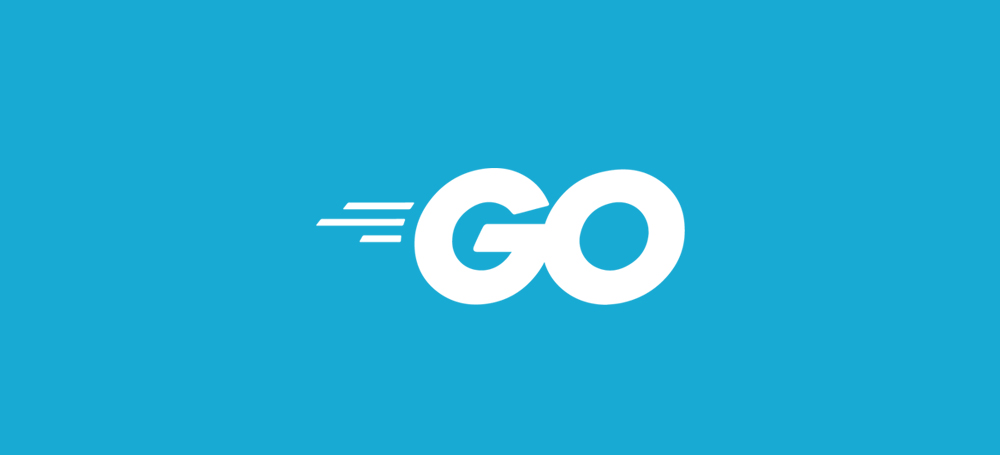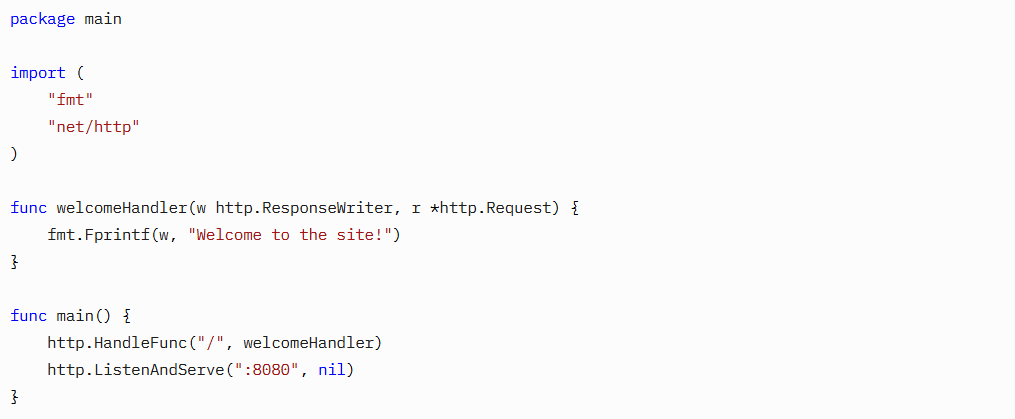Have you heard of Golang and wondered what it’s all about? Maybe you’ve seen it mentioned in a job posting or by a coworker. If you’re curious and want to understand this programming language, you’re in the right place. This article explains what Golang is, why it was created, its main features, and how it’s used in real projects. The explanation is straightforward, with examples and resources to help you explore further. Let’s dive in!
Introduction to Golang
Golang, also known as “Go,” is a programming language created at Google in 2007. It became available to everyone in 2009 and has grown popular among developers. It was designed by Robert Griesemer, Rob Pike, and Ken Thompson—experts with impressive backgrounds. For instance, Ken Thompson helped create Unix, a system that influences computers today. You can learn more about Rob Pike on his LinkedIn profile.
Why did Google make Golang? They wanted a language that was simple, fast, and could handle big projects. At the time, programming languages like C++ were powerful but complicated, and others like Python were easier but slower. Google needed something better for tasks like building web servers or managing cloud systems. Golang was their answer.
Now, companies like Google, Uber, Dropbox, and Docker use Golang. It’s great for web applications, cloud services, casino game development, and tools for developers because it’s efficient and easy to work with. Keep reading to see why it’s so useful.
Key Features of Golang

What makes Golang special? Here are its main features explained simply.
Concurrency: Managing Many Tasks at Once
Concurrency means doing multiple things at the same time. This is important for programs like web servers that handle lots of users. Golang uses goroutines, which are like small tasks that run together, and channels, which let these tasks share information. This makes it easier to write programs that work fast and handle many operations.
Simplicity: Easy to Understand
Golang keeps things simple with only 25 keywords. That’s fewer than many other languages, so it’s less confusing. Developers can focus on their work instead of figuring out complicated rules. It’s like using a basic set of tools that still gets the job done.
Performance: Quick and Reliable
Golang turns code into machine instructions that run fast. It’s a compiled language, so it doesn’t slow down like some others. It also manages memory well, keeping programs running smoothly even when they’re busy.
Standard Library: Ready-Made Tools
Golang comes with a standard library full of tools for common tasks—like building websites, working with files, or connecting to networks. You can start projects without needing extra downloads, which saves time.
Tooling: Help for Developers
Golang includes tools to make coding easier. For example, go fmt organizes your code, go test checks if it works, and go doc creates notes about your project. These tools help keep everything neat and running well.
Advantages of Using Golang
Why do people pick Golang? Here are some reasons it stands out.
Fast Compilation
Golang turns code into a program quickly, even for big projects. This means less waiting and more time to test and improve your work.
Works on Different Systems
You can use Golang on Windows, macOS, or Linux without changing your code. This is helpful if you work on different computers or with a team.
Helpful Community
Golang has a big group of users who share advice and support. You can find help online or at local events, making it easier to learn and solve problems.
Good for Big Projects
Golang handles large systems well. Its speed and task-management features make it perfect for web 3 apps that need to grow, like those used by millions of people.
Real-World Use Cases for Golang
Golang is used in many ways. Here are some examples of what it can do.
Web Development
Golang is excellent for building website backends, which manage user requests and data. Its speed and concurrency make it ideal for high-traffic sites. Frameworks like Gin and Echo simplify the process. For instance, Golang can be used to create engaging backend systems for interactive platforms, such as those described in casino game development services, which highlights how to build secure and dynamic online experiences.
Cloud Services
Major cloud platforms like Google Cloud and Amazon Web Services use Golang for its scalability. It efficiently handles large amounts of data, making it a go-to choice for cloud-based applications. If you’re interested in cutting-edge cloud technologies, this guide on choosing a Web3 game development company explores related systems that leverage Golang’s strengths.
Tools for Developers
Golang creates programs that help with coding tasks. For example, Docker—a tool that packages apps—is built with Golang. Its simplicity makes these tools reliable.
Networking Systems
Golang is good for projects that connect computers, like servers or messaging systems. Its built-in tools make these jobs easier to handle.
Learning Golang: A Clear Path for Beginners
Interested in learning Golang? Here’s a detailed roadmap to get started, whether you’re new to coding or experienced.
1. Explore the Official Resources
Begin with the official Golang website, which offers the “Tour of Go.” This interactive tutorial lets you write and test code in your browser, covering basics like variables, functions, and goroutines. It’s perfect for beginners and requires no setup.
2. Enroll in Online Courses
Platforms like Udemy and Coursera provide beginner-friendly Golang courses. These include video lessons, quizzes, and projects, such as building a simple web server. Look for courses with high ratings and hands-on exercises.
3. Read Recommended Books
Books offer in-depth knowledge. Try these:
-
The Go Programming Language by Alan Donovan and Brian Kernighan: A comprehensive guide for all skill levels.
-
Go in Action by William Kennedy: Focuses on practical applications with real-world examples. These books are available on Amazon or other bookstores.
4. Build Practice Projects
Start with small projects to apply what you’ve learned. Examples include:
-
A to-do list app to manage tasks.
-
A basic web server that responds to requests (like the example below).
-
A command-line tool to fetch data from a website. For inspiration, explore top 2D game ideas for beginners, as Golang can power simple game backends, like score trackers or multiplayer servers.
5. Contribute to Open-Source Projects
Join open-source projects on GitHub. Search for repositories tagged “beginner-friendly” or “good first issue.” Contributing lets you collaborate with others, improve your coding, and build a portfolio. For example, you might help improve a Golang library or fix small bugs in a tool.
6. Choose the Right Language for Your Goals
If you’re exploring Golang for specific projects, like game development, compare it with other languages. This guide on programming languages for AAA game development explains why Golang might be a great fit for backend systems in games.
Tips for Success
-
Code daily, even for 30 minutes, to build confidence.
-
Join online forums to ask questions and share your progress.
-
Review sample code on GitHub to learn different approaches.
-
Test your projects thoroughly to catch errors early.
The Golang Community: Connecting with Others
Golang’s community is one of its greatest strengths, offering support and opportunities to connect. Here’s a deeper look at how to engage.
Online Communities
-
Reddit r/golang: A forum with thousands of members discussing Golang projects, challenges, and tips. It’s great for asking beginner questions or sharing your work.
-
Golang Forum: An official discussion board for technical questions and community updates.
-
Stack Overflow: Search for “go” to find answers to coding problems or post your own questions.
-
Golang Slack: A chat platform with channels for beginners, job seekers, and specific topics like wallet development.
Local and Global Events
-
Meetups: Local Golang groups host meetups for learning and networking. Find events in your area on Meetup.com. For example, cities like New York, London, and Bangalore have active Go meetups.
-
Workshops: Some meetups include coding sessions where you can build projects with guidance. Check event descriptions for hands-on opportunities.
-
Conferences:
-
GopherCon: A major U.S. event with talks from Golang experts and workshops for all levels.
-
Golang UK Conference: A UK-based conference with sessions on real-world Golang applications.
-
dotGo: A European conference focusing on advanced Golang topics.
-
-
Hackathons: Some events, like those at GopherCon, include coding challenges where you can build projects and win prizes.
Influential People
Connect with Golang experts for inspiration:
-
Rob Pike: A co-creator of Golang. View his LinkedIn for insights into his work.
-
Brad Fitzpatrick: A key contributor to Golang projects. His LinkedIn highlights his impact on open-source software.
-
Francesc Campoy: A former Google developer advocate for Go, known for educational content. Find him on LinkedIn.
Community Projects
Contribute to open-source projects like:
-
Hugo: A Golang-based tool for building fast websites.
-
Kubernetes: A container management system partly written in Go. Search for these on GitHub to find ways to get involved. Joining the community helps you learn faster and build connections.
Real-World Cases: Companies Using Golang
Here’s how some companies use Golang to solve real problems.
Uber
Uber uses Golang to track locations for its rideshare service. It processes billions of data points—like where drivers and riders are—every day. Golang’s ability to handle many tasks at once keeps everything running smoothly.
Dropbox
Dropbox switched some of its systems to Golang to make them faster. It helps them store and move huge amounts of files with less delay, improving the experience for users.
Twitch
Twitch, a site for live video streaming, uses Golang for its chat system. Millions of people chat at the same time, and Golang keeps it fast and stable with low computer power.
SoundCloud
SoundCloud uses Golang for parts of its music platform, like signing in users and sending songs. Golang’s quick setup and simple code let them build these pieces faster.
GitLab
GitLab, a tool for managing code, uses Golang for its performance monitoring. It tracks how their systems are doing, helping them fix issues before they grow.
Example in Action
Here’s a simple Golang web server I built to test an idea:

This code creates a server that displays “Welcome to the site!” when you visit localhost:8080. Golang’s concurrency handles multiple visitors effortlessly. However, I learned to watch for “race conditions”—bugs when tasks access data at the same time. Testing and using channels fixed it.
These cases show Golang’s power in handling large-scale, real-time systems. For similar applications in gaming, like secure payment systems, see this guide on Boku casinos, which uses backend technologies Golang could support.
Golang for Fun: Beyond Work Projects
Golang isn’t just for serious work—it’s also great for fun projects. For example, you could build a backend for a word game like NYT Connections, where players group words by themes. Golang’s fast processing could manage game logic or leaderboards efficiently.
Conclusion: Why Golang Matters
Golang is a fast, simple, and strong programming language that developers around the world rely on. It’s great for web projects, cloud systems, and more because it’s easy to use and performs well. The community is there to help, and companies prove it works for big tasks.
If you’re thinking about learning a language, Golang is a smart choice. It’s good for beginners and pros alike, and it’s in demand for jobs. Start with the official Golang site or search for beginner tutorials. You won’t regret giving it a try!






